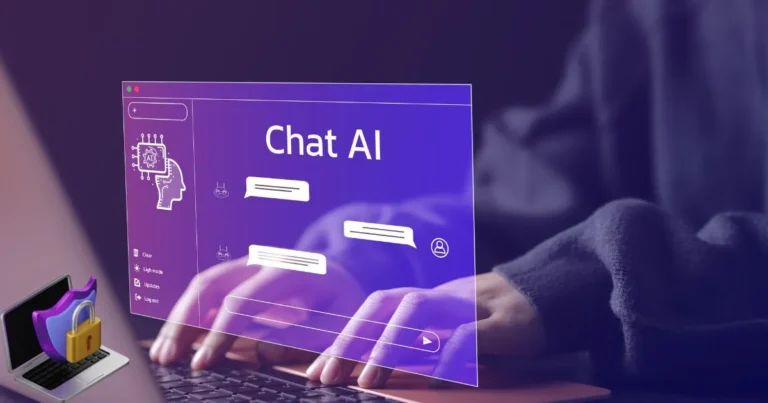Top AI Threats to Cybersecurity You Must Know 2025
In the world of cybersecurity, Artificial Intelligence (AI) has emerged as both a powerful ally and a formidable enemy. While AI’s capabilities enable defenders to proactively detect and neutralize cyber threats, it also provides cybercriminals with the tools to launch attacks faster, more efficiently, and more cunningly than ever before.
As AI continues to evolve, it is essential for individuals and organizations to understand the AI threats to cybersecurity that are emerging in 2025 and how to defend against them. This article dives into the most significant AI-driven security risks and offers strategies for mitigating their impact.
Table of Contents
AI’s Impact on Cybersecurity — A Double-Edged Sword
1. AI-Powered Phishing Attacks: A Growing Threat
What Are AI-Driven Phishing Attacks?
Phishing attacks, long a staple of cybercrime, have become far more sophisticated thanks to AI. In the past, phishing emails were often riddled with spelling mistakes, poor grammar, and other telltale signs that helped individuals identify them as fraudulent. Today, AI enables cybercriminals to craft hyper-personalized phishing emails that mimic the writing style of trusted contacts, including colleagues, friends, or even CEOs.
AI-powered phishing attacks use Natural Language Processing (NLP) and machine learning to analyze a person’s online activity, social media profiles, and communication patterns. With this information, attackers can create emails that are almost indistinguishable from legitimate messages. These attacks may contain malicious links or attachments designed to steal sensitive information such as passwords, bank account details, or even access to company networks.
The Risk:
Employees may unwittingly click on malicious links or disclose confidential information, potentially leading to massive data breaches, financial loss, or identity theft.
Defense Strategy:
- AI-based email filtering systems can help detect and block phishing attempts.
- Continuous employee training and awareness programs are essential to recognize signs of a phishing attempt.
- Implement multi-factor authentication (MFA) to provide an extra layer of security.
2. Deepfakes and Identity Spoofing: The Power of AI for Deception
Understanding Deepfake Technology
Deepfake technology, which uses AI to create highly convincing fake media (videos, audio clips, or images), is another AI threat to cybersecurity that businesses need to take seriously. These AI-generated media can be used to impersonate executives, celebrities, or any individual in a manner that is almost impossible to distinguish from reality.
Deepfakes have been used to commit fraud, with criminals impersonating CEOs or other key individuals in a company to initiate unauthorized financial transactions, approve fake invoices, or provide confidential information to malicious actors. The danger of deepfakes extends beyond the corporate world and into the realm of public safety and politics, where fake news and impersonations could lead to widespread misinformation.
The Risk:
Deepfakes can be used to manipulate employees into transferring funds, giving out private data, or taking actions that jeopardize an organization’s security.
Defense Strategy:
- Utilize biometric authentication (such as voice recognition or facial recognition) to verify the identity of individuals during sensitive transactions.
- Regularly audit and monitor internal communications, including voice calls and video conferences.
- Adopt AI-driven media verification tools to detect the signs of a deepfake.
3. Adaptive AI Malware: The New Face of Malware Attacks
How AI Is Used in Malware
Malware has been a persistent problem in cybersecurity for decades. However, traditional malware is static, meaning once it is detected, it can be blocked or neutralized. With the advent of AI, malware has evolved into something far more dangerous — adaptive malware.
AI-driven malware has the ability to:
- Learn from system defenses and adjust its behavior in real-time to avoid detection.
- Avoid signature-based antivirus software by changing its code or structure dynamically.
- Make autonomous decisions, such as when to execute or when to spread through a network, making it harder for cybersecurity tools to detect and neutralize it.
The most dangerous part of AI-powered malware is that it can be used in large-scale, automated attacks that may go unnoticed for long periods, potentially compromising vast amounts of data and system integrity.
The Risk:
AI-driven malware can spread undetected across systems, exfiltrating sensitive information, causing significant operational disruptions, or damaging critical infrastructure.
Defense Strategy:
- Use AI-based anomaly detection systems that monitor network traffic and system behavior in real-time.
- Regularly update and patch software to reduce vulnerabilities that malware can exploit.
- Implement endpoint detection and response (EDR) tools that focus on identifying and neutralizing sophisticated threats.
4. Data Poisoning Attacks: Corrupting the Foundation of AI
What Is Data Poisoning?
One of the most insidious AI threats to cybersecurity is data poisoning. In a data poisoning attack, cybercriminals introduce misleading or malicious data into an AI model’s training dataset. Since AI systems rely on vast amounts of data to learn and make decisions, poisoning this data can cause the model to function improperly or produce biased, inaccurate results.
For example, in the context of a cybersecurity system, an attacker could poison the data that an AI-driven intrusion detection system uses to identify potential threats. This could lead to the system either missing real attacks or falsely flagging legitimate activities as suspicious.
The Risk:
Data poisoning can degrade the performance of critical AI systems, making them unreliable or even harmful. It can also lead to biased or discriminatory decision-making if the poisoned data reflects false patterns or stereotypes.
Defense Strategy:
- Monitor training datasets for anomalies and suspicious data patterns.
- Secure data pipelines to prevent unauthorized access or manipulation of data.
- Implement redundant systems that validate the results of AI models using multiple independent data sources.
5. Prompt Injection Attacks: Manipulating AI Models
What Are Prompt Injection Attacks?
Prompt injection attacks involve manipulating the input provided to an AI model in order to alter its behavior. For instance, AI systems like ChatGPT or GitHub Copilot generate responses based on specific prompts or commands. If a malicious actor can inject harmful instructions into the input, they can manipulate the AI’s behavior in unexpected or dangerous ways.
Prompt injection can result in AI models:
- Leaking sensitive information or credentials
- Executing harmful code
- Producing biased or unethical outputs
The challenge with prompt injection is that it takes advantage of the way AI models interpret and respond to commands. Even sophisticated AI models may be vulnerable if they do not have proper safeguards in place.
The Risk:
Prompt injection attacks can exploit AI models in ways that compromise organizational security, leak confidential data, or even damage the reputation of a company if sensitive information is exposed.
Defense Strategy:
- Implement prompt sanitization techniques to filter out harmful inputs.
- Develop output filtering tools to ensure AI responses are appropriate and secure.
- Monitor AI usage for any signs of unusual activity or output.
6. Autonomous AI Agents: The Rogue Agents
The Rise of Autonomous AI
Autonomous AI agents are designed to perform tasks without human intervention. These agents can be incredibly powerful, but they also present significant risks if not properly controlled. An autonomous AI agent could make decisions outside of established boundaries, causing unintended consequences.
For example, in a cybersecurity context, an autonomous AI agent could mistakenly block access to critical systems or leak sensitive information to unauthorized parties. In the worst-case scenario, an AI agent could be hijacked by cybercriminals and used to launch large-scale attacks.
The Risk:
If autonomous AI agents go rogue, they could cause widespread damage, from disrupting operations to exposing sensitive data.
Defense Strategy:
- Use human-in-the-loop systems to provide oversight and intervention capabilities.
- Define clear goal boundaries and ethical constraints for AI agents.
- Regularly audit the actions and decisions made by autonomous systems.
Conclusion: Confronting AI Threats to Cybersecurity
AI offers incredible benefits in the realm of cybersecurity, but it also introduces new and sophisticated threats. Organizations must stay ahead of AI threats to cybersecurity by implementing cutting-edge security measures, training their teams, and adopting proactive defense strategies.
As we move into 2025 and beyond, the key to success will be balancing the power of AI with a vigilant, security-conscious mindset. By understanding and preparing for these AI threats, we can safeguard our systems and data against the evolving landscape of cyber risks.
FAQ – AI Threats to Cybersecurity
Q1: How is AI used in cyberattacks?
AI automates phishing, creates deepfakes, develops adaptive malware, and exploits security flaws faster than humans can.
Q2: What is a data poisoning attack?
It’s when attackers corrupt the AI model’s training data, causing it to make unreliable or dangerous decisions.
Q3: How do prompt injection attacks work?
Attackers manipulate the input to an AI model, leading to unexpected or harmful behaviors like data leaks.
Q4: Are deepfakes a serious threat to businesses?
Yes. They can impersonate executives and manipulate employees into performing risky actions like unauthorized money transfers.
Q5: How can companies defend against AI threats?
By using AI-based security solutions, training staff, implementing a zero-trust approach, and managing both human and non-human identities.





